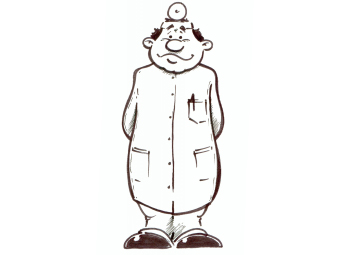Are you getting more than your “money’s worth” when you visit your doctor? If you’ve waited weeks for your appointment, then you feel rushed or short-changed, you may be surprised about what your physician really thinks.
A study in the Sept. 26 issue of the Archives of Internal Medicine reveals how physicians themselves rate time spent with patients. “Some believe that a substantial amount of U.S. health care is unnecessary, suggesting that it would be possible to control costs without rationing effective services,” the authors said.
Too Much, Too Little

Check out selected details of study results among U. S.primary care physicians:
- 42 percent believe that patients in their own practice are receiving too much care
- 6 percent said they were receiving too little
Why do doctors “practice more aggressively”?
- 76 percent: malpractice concerns
- 40 percent: inadequate time to spend with patients
Doctors also cited “financial incentives” as a reason for aggressive practice.
- 62 percent said diagnostic testing would be reduced if it did not generate revenue for medical subspecialists (39 percent for primary care physicians). For example, the American College of Physicians says: “Internists can choose to focus their practice on general internal medicine or take additional training to ‘subspecialize’ in additional areas of internal medicine” like cardiology or oncology.
The conclusion: Many primary care physicians think patients get too much care, and they want to know how and what their peers are doing. “Malpractice reform, realignment of financial incentives, and more time with patients could remove pressure on physicians to do more than they feel is needed. Physicians are interested in feedback on their practice style, suggesting they may be receptive to change,” the authors wrote.
It’s Your Time
The average physician visit is 19 minutes, according to the National Center for Health Statistics. Although some doctors often carry patient rosters of several thousand patients, a study in the Annals of Family Medicine reported that on average, doctor spend eight hours and eight minutes in the office per day and have 20 patient visits. That’s helpful to know when you’re clock-watching during “your time.”
KevinMD, social media’s leading physician voice, says: “My quick estimates of the reasons why physicians over-order tests would be 70 to 80 percent due to defensive medicine, 20 to 30 percent due to patient demand—although there is overlap here with defensive medicine—and 5 to 15 percent because of financial incentive.” In other words, we ask for them, we get them. Doctors are worried that if they don’t order tests they could miss something and be sued, and finally, more tests, conducted in the office, mean higher revenue. Makes dollars and sense.
A review of the study in the National Journal quoted Dr. Calvin Chou of the University of California (San Francisco) and San FranciscoVeterans Affairs Medical Center, who suggested better communication. “Implicit in these findings is a kind of trained helplessness—it seems that physicians know they are practicing aggressively but feel they have no recourse.”
+++++++++++++++++++++++++++++++++++++++++++++++++++++++++++++++++++
(Photo courtesy: © Soldeandalucia | Dreamstime.com)